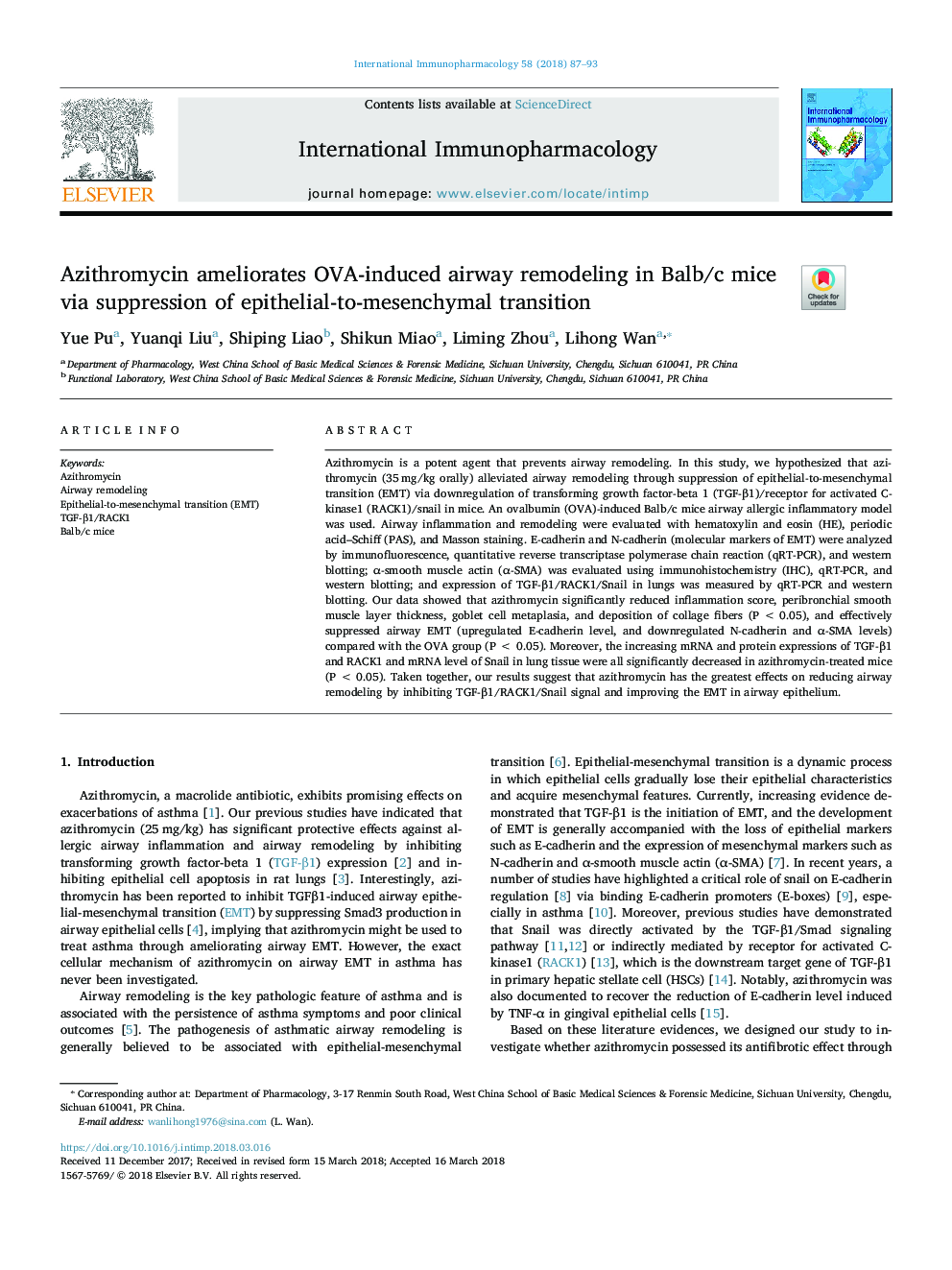| Article ID | Journal | Published Year | Pages | File Type |
|---|---|---|---|---|
| 8531252 | International Immunopharmacology | 2018 | 7 Pages |
Abstract
Azithromycin is a potent agent that prevents airway remodeling. In this study, we hypothesized that azithromycin (35â¯mg/kg orally) alleviated airway remodeling through suppression of epithelial-to-mesenchymal transition (EMT) via downregulation of transforming growth factor-beta 1 (TGF-β1)/receptor for activated C-kinase1 (RACK1)/snail in mice. An ovalbumin (OVA)-induced Balb/c mice airway allergic inflammatory model was used. Airway inflammation and remodeling were evaluated with hematoxylin and eosin (HE), periodic acid-Schiff (PAS), and Masson staining. E-cadherin and N-cadherin (molecular markers of EMT) were analyzed by immunofluorescence, quantitative reverse transcriptase polymerase chain reaction (qRT-PCR), and western blotting; α-smooth muscle actin (α-SMA) was evaluated using immunohistochemistry (IHC), qRT-PCR, and western blotting; and expression of TGF-β1/RACK1/Snail in lungs was measured by qRT-PCR and western blotting. Our data showed that azithromycin significantly reduced inflammation score, peribronchial smooth muscle layer thickness, goblet cell metaplasia, and deposition of collage fibers (Pâ¯<â¯0.05), and effectively suppressed airway EMT (upregulated E-cadherin level, and downregulated N-cadherin and α-SMA levels) compared with the OVA group (Pâ¯<â¯0.05). Moreover, the increasing mRNA and protein expressions of TGF-β1 and RACK1 and mRNA level of Snail in lung tissue were all significantly decreased in azithromycin-treated mice (Pâ¯<â¯0.05). Taken together, our results suggest that azithromycin has the greatest effects on reducing airway remodeling by inhibiting TGF-β1/RACK1/Snail signal and improving the EMT in airway epithelium.
Related Topics
Life Sciences
Immunology and Microbiology
Immunology
Authors
Yue Pu, Yuanqi Liu, Shiping Liao, Shikun Miao, Liming Zhou, Lihong Wan,
